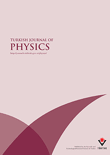
Turkish Journal of Physics
Scope & Guideline
Elevating academic discourse in physics and beyond.
Introduction
Aims and Scopes
- Astrophysics and Cosmology:
Research related to the universe, celestial bodies, and the fundamental forces governing them, including black holes, dark matter, and cosmic rays. - Condensed Matter Physics:
Studies involving the properties of solid and liquid matter, including phenomena related to nanomaterials, phase transitions, and electronic properties. - Experimental Physics:
Innovative experimental setups and methodologies aimed at exploring physical phenomena, with applications in materials science and engineering. - Quantum Mechanics and Quantum Field Theory:
Theoretical explorations of quantum systems, including quantum entanglement, quantum states, and their implications in modern physics. - Statistical and Mathematical Physics:
Application of statistical mechanics and mathematical techniques to understand complex systems and their critical behaviors. - Optics and Photonics:
Research focusing on light and its interactions with matter, including developments in photonic devices and optical materials.
Trending and Emerging
- Nanotechnology and Material Science:
There is a growing focus on the development and application of nanomaterials, including studies on their properties and potential uses in various fields, such as electronics and biomedicine. - Quantum Computing and Quantum Information:
Emerging themes related to the principles of quantum mechanics applied to computing and information processes, reflecting the increasing importance of quantum technologies. - Astrophysical Phenomena and High-Energy Physics:
Research on high-energy cosmic events, such as gamma-ray astronomy and the study of cosmic rays, indicates a heightened interest in understanding the universe's extreme conditions. - Advanced Photonic Devices:
The development of novel optical materials and photonic structures, such as photonic crystals and their applications in telecommunications, is becoming a prominent area of research. - Theoretical Models in High-Energy Physics:
Increasing attention is given to theoretical frameworks that explain phenomena in high-energy physics, including advanced models for particle interactions and cosmological theories.
Declining or Waning
- Biophysics:
Papers related to the interface of biology and physics, such as biological networks and phenomena, have seen a reduction, potentially due to a shift towards more fundamental or applied physics topics. - Econophysics:
Research that applies concepts from physics to economic systems has become less frequent, suggesting that the focus may be moving away from interdisciplinary studies between physics and economics. - Thermal and Magnetic Properties of Materials:
While still important, there seems to be a decline in the exploration of thermal and magnetic properties of certain materials, indicating a possible shift towards more cutting-edge or novel material studies.
Similar Journals

Lithuanian Journal of Physics
Cultivating a Community of Physics InnovatorsWelcome to the Lithuanian Journal of Physics, an esteemed publication helmed by the Lithuanian Physical Society, dedicated to advancing the field of physics and astronomy. Established in 2008 and continually publishing insightful research through 2024, this journal aims to provide a platform for high-quality scholarly articles that contribute to the understanding of various physical phenomena. With a steady presence in the academic landscape, the journal is currently ranked in the fourth quartile of the Physics and Astronomy category and is positioned at the 18th percentile in its Scopus ranking, reflecting its niche focus and accessibility for researchers and students alike. Although currently not operating under an open access model, the journal remains a vital resource for professionals seeking to stay informed on the latest developments in the field. The Lithuanian Journal of Physics invites contributions that inspire collaboration and innovation in physical sciences, making it an invaluable resource for the global scientific community seeking to expand knowledge within this dynamic field.
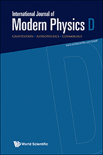
INTERNATIONAL JOURNAL OF MODERN PHYSICS D
Exploring the Cosmos through Rigorous ResearchWelcome to the INTERNATIONAL JOURNAL OF MODERN PHYSICS D, a premier publication dedicated to the advancement of knowledge in the fields of Astronomy and Astrophysics, Mathematical Physics, and Space and Planetary Science. Published by WORLD SCIENTIFIC PUBL CO PTE LTD in Singapore, the journal boasts an impressive impact, being ranked Q2 in Astronomy and Astrophysics and Mathematical Physics, and Q3 in Space and Planetary Science. With a converged publishing timeline from 1996 to 2024, this journal provides a vital platform for researchers and professionals to disseminate their findings, engage with cutting-edge research, and explore emerging ideas in modern physics. Although it operates under a traditional access model, the rigorous peer-reviewed process ensures that only the highest quality research contributes to the collective understanding of our universe. Join us in advancing the frontiers of physics and astronomy!
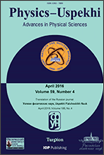
PHYSICS-USPEKHI
Exploring the Frontiers of Physics and AstronomyPHYSICS-USPEKHI, published by Uspekhi Fizicheskikh Nauk, is a prominent peer-reviewed journal in the field of physics and astronomy, reaching researchers and professionals since its inception in 1993. With an ISSN of 1063-7869 and an E-ISSN of 1468-4780, this esteemed journal has been classified as Q2 in the Physics and Astronomy category based on the 2023 quartiles, ranking 74 out of 243 journals in its Scopus classification, placing it in the 69th percentile. Although currently not an open access journal, it provides invaluable insights and advancements in the field, fostering an environment for scholarly exchange and collaborative research. Based in Moscow, Russia, PHYSICS-USPEKHI continues to shape the landscape of theoretical and experimental physics, inviting submissions that contribute to its rich legacy of high-impact scientific discourse.

JETP LETTERS
Fostering Breakthroughs in Theoretical and Experimental ScienceJETP LETTERS, published by MAIK NAUKA/INTERPERIODICA/SPRINGER, is a prestigious journal in the field of physics and astronomy, which plays a pivotal role in disseminating groundbreaking research and innovative ideas since its inception in 1969. With an ISSN of 0021-3640 and an E-ISSN of 1090-6487, this journal aligns well with the interests of both seasoned researchers and emerging scholars, having achieved a 2023 category rank of Q3 for miscellaneous topics within physics and astronomy. Located in the United States at 233 SPRING ST, NEW YORK, NY 10013-1578, JETP LETTERS serves as a critical resource for its readership, offering exclusive insights and advancements across diverse areas of physics. While not open access, it hosts a collection of articles that refine theoretical approaches and experimental methods, providing both knowledge and inspiration to professionals and academics seeking to make impactful contributions to the scientific community. The journal’s quality is reflected in its Scopus ranking, where it stands at 39 out of 81 in the multidisciplinary category, placing it in the 52nd percentile, thus underscoring its significance and reliability as a scholarly outlet.

INDIAN JOURNAL OF PHYSICS
Championing Cutting-Edge Research in PhysicsINDIAN JOURNAL OF PHYSICS, published by the Indian Association for Cultivation of Science, serves as a pivotal platform for researchers and scholars in the field of physics and astronomy. With its ISSN 0973-1458 and E-ISSN 0974-9845, this journal is committed to presenting innovative research and developments across diverse topics in physics, covering both theoretical and experimental studies. The journal has made its mark in the academic community, evidenced by its classification in the Q3 category within the Physics and Astronomy domain as of 2023, and ranks #100 out of 243 in the Scopus curated database, placing it in the 59th percentile. Spanning from 2005 to 2024, the INDIAN JOURNAL OF PHYSICS aims to foster knowledge exchange and stimulate discussions among physicists and scientific enthusiasts. Whether you are a researcher looking to publish your findings, a professional seeking updates in your field, or a student eager to explore varying aspects of physics, this journal is an invaluable resource contributing significantly to the understanding and advancement of physics in India and beyond.
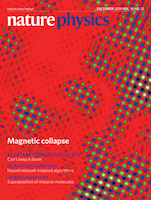
Nature Physics
Connecting Ideas, Inspiring Innovation in PhysicsNature Physics is a premier journal dedicated to publishing high-impact research in the realm of physics, brought to you by the esteemed NATURE PORTFOLIO. With its ISSN 1745-2473 and E-ISSN 1745-2481, this journal has established itself as a vital resource for the physics community, enjoying a remarkable Q1 quartile ranking in the Physics and Astronomy category for 2023 and securing an impressive Rank #5/243 and a 98th percentile ranking in Scopus. Since its inception in 2005, Nature Physics has become a catalyst for innovation, featuring cutting-edge research that encompasses a broad spectrum of physics disciplines. Although it operates under traditional subscription models, it maintains a commitment to accessibility through selective publications and editorial excellence. Positioned in Berlin, Germany, this journal is a must-read for researchers, professionals, and students who seek to stay at the forefront of advancements in physics.

Frontiers of Physics
Unlocking the Future of Physics, TogetherFrontiers of Physics, published by Higher Education Press, is a premier open-access journal dedicated to fostering innovative research and excellence within the field of physics. With an ISSN of 2095-0462 and an E-ISSN of 2095-0470, this rapidly growing journal has established itself as a valuable platform for disseminating cutting-edge findings, covering a diverse range of topics from theoretical frameworks to experimental advancements. Notably, Frontiers of Physics has achieved an impressive Q1 ranking in the 2023 Scopus Quartiles for Physics and Astronomy, securing a competitive 5th out of 81 positions in its category, reflecting a high impact factor that underscores its importance to the scientific community. Since its inception in 2011 and continuing through 2024, the journal aims to bridge the gap between academia and industry, encouraging collaboration among researchers, professionals, and students alike. Its commitment to open access ensures that high-quality research is readily accessible, thereby promoting knowledge sharing and advancement in the global physics community. Explore the potential of your research in Frontiers of Physics, where the future of physics flourishes.
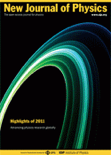
NEW JOURNAL OF PHYSICS
Transforming research into accessible knowledge for all.NEW JOURNAL OF PHYSICS, published by IOP Publishing Ltd, is a prestigious open-access journal that has been at the forefront of the physics community since its inception in 1998. With an impact factor that places it in the Q1 category of Physics and Astronomy (miscellaneous) and a commendable ranking of #49 out of 243 in the general physics and astronomy category according to Scopus, this journal is recognized for its significant contribution to advancing research in the field. The journal caters to a broad scope of topics, providing a platform for the dissemination of cutting-edge research findings and innovative theoretical explorations. Operating from the United Kingdom, it offers a truly international perspective, making its contents accessible and impactful to a global audience. With robust open-access options, the NEW JOURNAL OF PHYSICS ensures that research findings are freely available, promoting collaboration and knowledge sharing among researchers, professionals, and students alike. This commitment to accessibility, combined with its high-quality content, makes it an essential resource for anyone engaged in the physics community.
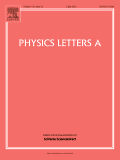
PHYSICS LETTERS A
Connecting Ideas, Inspiring InnovationsPhysics Letters A is a renowned scientific journal published by Elsevier, dedicated to the field of physics and astronomy. Established in 1963, it has continuously evolved, offering a platform for the swift dissemination of significant research findings in various branches of physics. As of 2023, it holds a commendable Q2 ranking in the category of Physics and Astronomy (miscellaneous) and ranks 69th out of 243 journals in the same domain according to Scopus, positioning itself in the 71st percentile of academic impact. With its comprehensive scope, Physics Letters A provides a vital resource for researchers, professionals, and students, facilitating academic discourse and advancing knowledge across the field. Although it does not currently offer Open Access options, its rigorous peer-review process ensures high-quality content. It is centrally located in Amsterdam, Netherlands, and continues to be an essential outlet for innovative contributions to the physics community through the year 2024 and beyond.
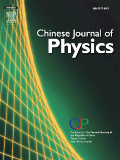
CHINESE JOURNAL OF PHYSICS
Illuminating Discoveries in Physics and AstronomyCHINESE JOURNAL OF PHYSICS is a distinguished publication in the field of physics, published by Elsevier. With its roots in Taiwan, this journal has been a vital platform for disseminating innovative research findings since its convergence in 1996, and it continues to thrive, with articles contributing to the advancement of physics and astronomy until 2024. The journal is recognized for its high quality, achieving a notable Q2 ranking in the Physics and Astronomy category, positioning it among the top 30 out of 243 journals in its field, reflecting an impressive 87th percentile ranking. Although it does not operate under an open access model, the journal offers valuable insights into the latest trends and developments in general physics and astronomy, making it an essential resource for researchers, professionals, and students dedicated to advancing their knowledge and understanding of these dynamic fields. With a commitment to rigorous peer review and a diverse range of articles, the CHINESE JOURNAL OF PHYSICS is instrumental in fostering collaboration and innovation within the global scientific community.